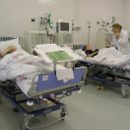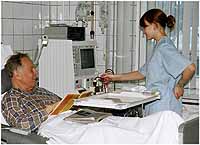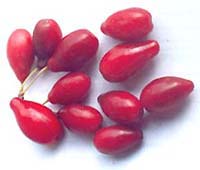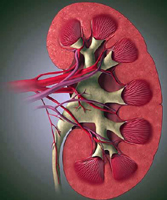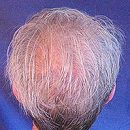Pain in the lower back and in the abdomen, nausea, vomiting, rapid, painful urination, temperature rise - these are symptoms inherent in many diseases. Differential diagnosis of urolithiasis is based on patient complaints, objective and instrumental research data, results obtained in the laboratory. Urolithiasis requires increased attention.
Content
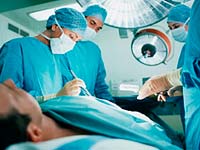 Urolithiasis (ICD-10 № 20-23) — Chronic disease, the main manifestation of which is the renal colic, resulting from the movement of the concreters by urinary tract. Renal colic requires emergency measures. But how to distinguish it from other types of pain accompanying diseases of the abdominal organs? For this, doctors have a concept «Differential diagnosis». Urolithiasis requires accounting for data instrumental research and results obtained from the laboratory. The basis of the differential diagnosis of urolithiasis is the analysis of complaints of patient and objective symptoms of the disease.
Urolithiasis (ICD-10 № 20-23) — Chronic disease, the main manifestation of which is the renal colic, resulting from the movement of the concreters by urinary tract. Renal colic requires emergency measures. But how to distinguish it from other types of pain accompanying diseases of the abdominal organs? For this, doctors have a concept «Differential diagnosis». Urolithiasis requires accounting for data instrumental research and results obtained from the laboratory. The basis of the differential diagnosis of urolithiasis is the analysis of complaints of patient and objective symptoms of the disease.
Urolithiasis: renal colic diagnosis
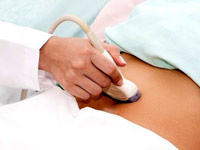 The exacerbation of the urolithiasis (kidney stones, ureter MKB-10 No. 20) is manifested by an obstacle to the outflow of urine, overflow of a cup-lowering kidney system, its energile, stretching the renal capsule and the appearance of acute pain. The attack starts suddenly, after physical effort or alone after abundant drinking. The pain is localized in the lower back, wears cutting character, it is weakening, it increases, makes the patient in search of the situation.
The exacerbation of the urolithiasis (kidney stones, ureter MKB-10 No. 20) is manifested by an obstacle to the outflow of urine, overflow of a cup-lowering kidney system, its energile, stretching the renal capsule and the appearance of acute pain. The attack starts suddenly, after physical effort or alone after abundant drinking. The pain is localized in the lower back, wears cutting character, it is weakening, it increases, makes the patient in search of the situation.
The pain extends to the hypochondrium, along the ureter, in the external genital organs, is accompanied by the participation of urges for urination. Often arises nausea, vomiting, dizziness, blood pressure increases. The depreciation of the concrete in the bladder brings a sudden relief. In men, the concretion can linger in the urethra (ICD 10 urolithiasis, a stone in the urethre) and sharp symptoms of colic are replaced by manifestations of urethritis.
Acute «laboratory» Urolithiasis will indicate the presence of inflammation in the kidneys and hematuria caused by injury of urinary tract.
Differential diagnosis: urolithiasis and liver colic
The hepatic colic with acute cholecystitis is characterized by primary localization of pain in the right hypochondrium and subsequent distribution throughout the abdomen. The pain occurs after 2-3 hours after consuming oily and fried food, gives to the right connective fossa, in the neck, in the back, is accompanied by nausea, vomiting, yellowing scool and skin, increases when pressed on the stomach in the field of hypochondrium.
Differential diagnosis: urolithiasis and acute appendicitis
Pain with acute appendicitis appears in the right hypochondrium, goes to the center of the abdomen and then into the right iliac region. Stomach swells, marked nausea and vomiting. The patient lies on the right side, pursing his legs to the stomach, the movement enhances pain. If the laboratory has identifies a certain increase in leukocytes in the blood, during appendicitis, there is a pronounced leukocytosis in appendicitis.
Differential diagnosis of body ulcers and urolithiasis
The spinning of the stomach and duodenal ulcers usually happens after eating, manifests a sudden docking pain in the poverty, pallhery, cold humidity of the skin, falling blood pressure, the weakness of cardiac activity, belly strains as a board.
Differential diagnosis of urolithiasis and acute pancreatitis
For acute pancreatitis Typical stuffing pains propagating from the opposite region to the left. Nausea and vomiting is noted, the body temperature remains normal, in the blood and the urine increases the number of transaminase enzymes.
Differential diagnosis of adnexitis and urolithiasis
Symptoms of renal colic in women can resemble adnexitis. However, with female diseases, the pain rarely arises suddenly, it is constant, covers the bottom of the abdomen, gives to the rectum, causing a feeling of overflow, the body temperature rises, weakness is notaring, malaise. Vaginal research helps to clarify the diagnosis.
The difference between intestinal obstruction and urolithiasis (ICD 10 No. 20)
In case of intestinal obstruction, the pain is very strong, accompanied by a swift of the abdomen, nausea, vomiting, stool delay and gases. With urolithiasis, the intestine paresis is sometimes developing, so additional research is performed to clarify the diagnosis: ultrasound, chromocystoscopy, ultrasound.


